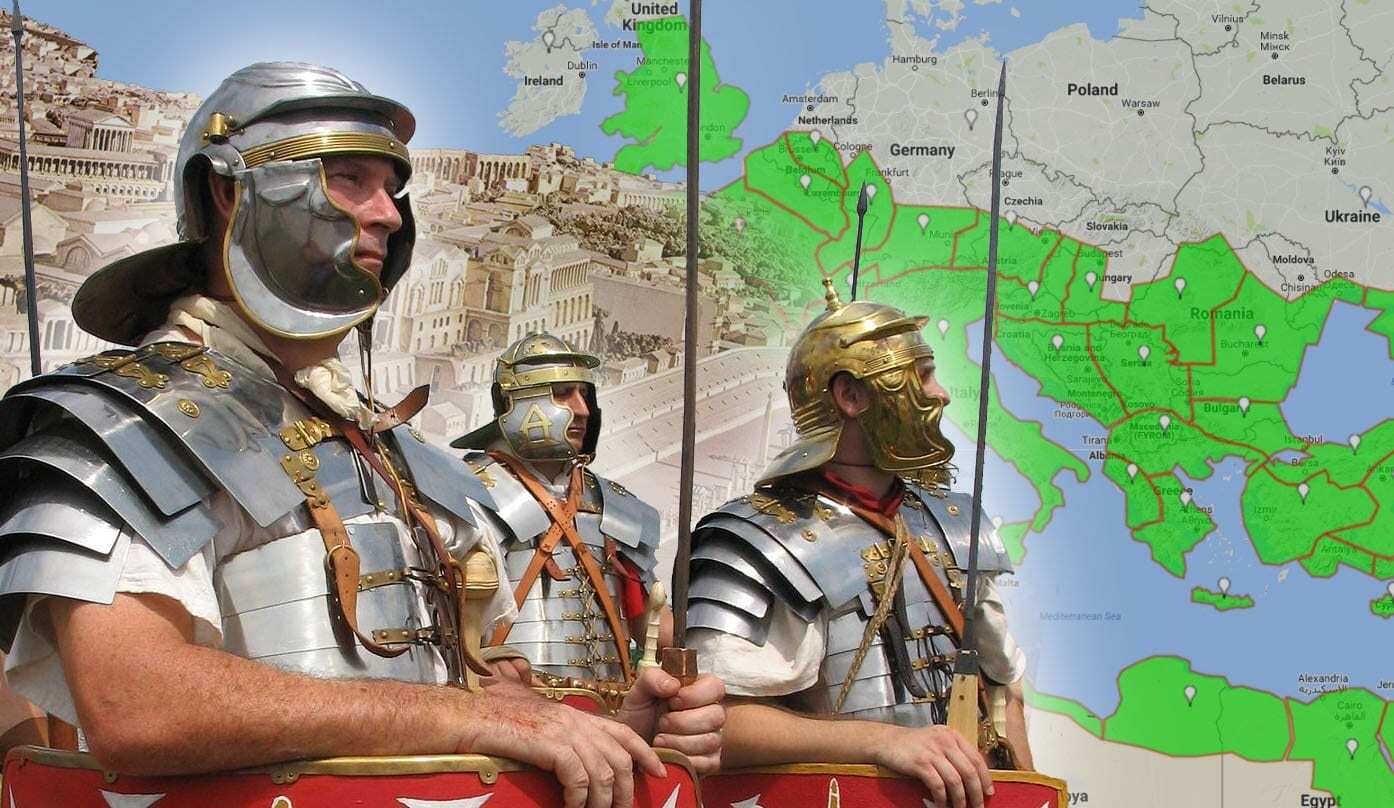The Roman Empire in 117 AD, at its greatest extent at the time of Trajan’s death. The Roman Empire was the post-Roman Republic period of the ancient Roman civilisation, characterised by a government headed by emperors and large territorial holdings around the Mediterranean Sea in Europe, Africa and Asia.
The first two centuries of the Empire were a period of unprecedented stability and prosperity known as the Pax Romana (“Roman Peace”). It reached its greatest territorial expanse during the reign of Trajan (98–117 AD). A period of increasing trouble and decline began with the reign of Commodus. In the 3rd century, the Empire underwent a crisis that threatened its existence, but was reunified under Aurelian.
In an effort to stabilize the Empire, Diocletian set up two different imperial courts in the Greek East and Latin West. Christians rose to power in the 4th century following the Edict of Milan in 313 and the Edict of Thessalonica in 380. Shortly after, the Migration Period involving large invasions by Germanic peoples and the Huns of Attila led to the decline of the Western Roman Empire.
Due to the Roman Empire’s vast extent and long endurance, the institutions and culture of Rome had a profound and lasting influence on the development of language, religion, architecture, philosophy, law, and forms of government in the territory it governed, particularly Europe.
For full screen access (desktop only), please click the X symbol beneath the map. For desktop and Mobile –Click Here
(Positioning and plotting may not be exact, map is for representative purposes)
Header Image Credit : Adapted from image released on CC License by Caliga10

